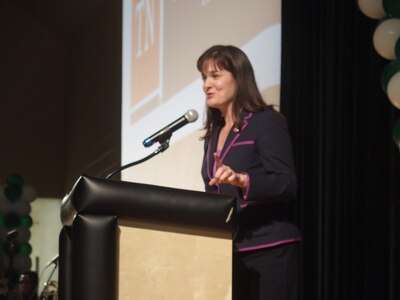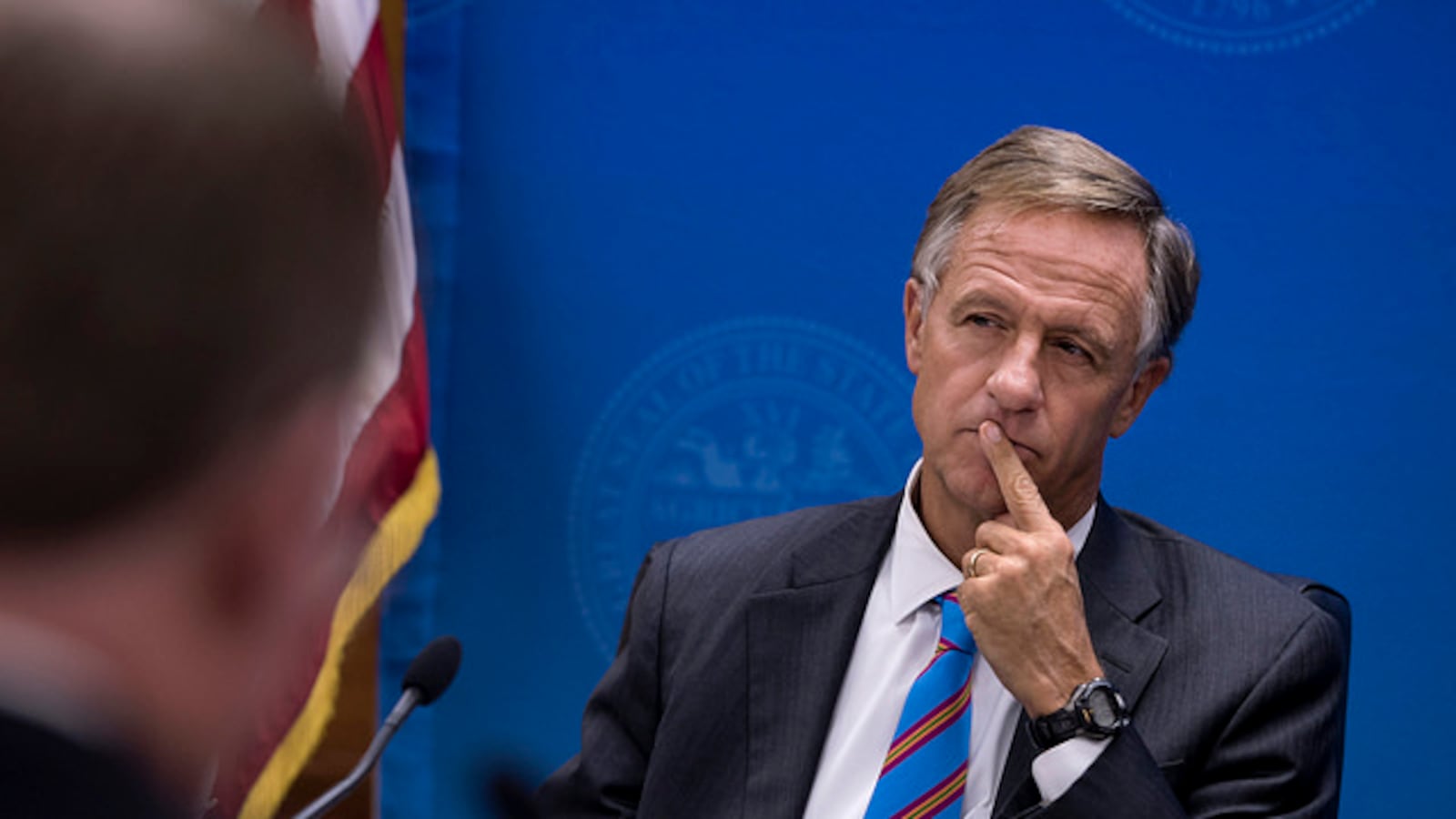As Gov. Bill Haslam prepares the final budget of his administration, Education Commissioner Candice McQueen is asking to increase teacher pay for a third straight year.
She also wants the state to finally help school districts pay for Tennessee’s required but unfunded intervention program aimed at keeping struggling students from falling through the cracks.
McQueen presented her wish list to the governor during budget hearings Tuesday at the State Capitol.
Tennessee is projecting a slowdown in the growth of tax revenue next fiscal year — about $350 million compared to $1 billion this year — but Haslam says that investing in teacher pay continues to be a priority of his two-term administration.
“We want to continue to fund teacher salaries the best we can,” he said following Tuesday’s budget presentations.
McQueen offered up $73 million in specific requests, the bulk of which would cover growth and inflationary costs associated with the state’s funding formula known as the Basic Education Program, or BEP. The list also includes $10 million for school improvement grants for “priority schools” in the state’s bottom 5 percent, another $6 million to help charter schools pay for facilities for a second year in a row, and almost $4.5 million for the state’s reading initiative in its third year.

But she did not attach dollar amounts for her big-ticket requests like teacher pay and the unfunded program known as Response to Instruction and Intervention, or RTI. She told reporters later that her department will pound out those important details with Haslam’s administration during the months ahead before the governor presents his final spending proposal to lawmakers in February.
Citing a $450 million increase in state allocations for teacher salaries in the last three years, McQueen said “we’re going to continue to commit to (raising pay).”
“Certainly, this is a tighter budget year than we had last year, so we have to look at the big picture around compensation before we can give an exact amount,” she told Chalkbeat.
Tennessee launched RTI in elementary schools in 2014 as a way to identify individual students’ learning needs early and then to offer additional supports. Now entering its fourth year, the program is in middle and high schools too, but still without additional state money to pay for it.
That’s been a source of frustration for districts that have had to shift existing resources to pay for the state’s mandate. Sometimes, for instance, they’ve cut classroom teacher positions in order to hire RTI specialists.
The program has been cited in several funding lawsuits against the state by districts in Memphis and Chattanooga, but McQueen told reporters that her request is based on research, not litigation.
“We have come to the conclusion that RTI has been very effective, both in helping us with special needs identification … but also ensuring that our kids are getting what they need based on their individual needs,” McQueen said of a study released last year. “… We wanted to come forth (with funding) based on that full review.”
The study reported that the program’s impact on student growth has varied considerably from school to school and can only be effective if implemented correctly.
The commissioner also asked for money to train social studies teachers on new standards that will reach Tennessee classrooms in the fall of 2019. In addition, she wants funding to launch a new leadership initiative to train and equip principals, especially for the state’s highest-needs schools.
“While teachers are the No. 1 in-school factor in moving student achievement, we know that principals are the second,” she told Haslam. “Teachers follow effective principals. They want to work for effective principals.”
Haslam told reporters later that McQueen’s leadership initiative is a strategic investment that he believes is smart. “With all the discussion around education reform, I’m convinced that having the right leader in the building makes more difference than anything,” he said.
This fiscal year, more than $6 billion of Tennessee’s $37 billion budget went to K-12 education, about 96 percent of which was distributed directly to districts. About $5 billion of that is generated from state and local taxes, with the balance coming from the federal government.

